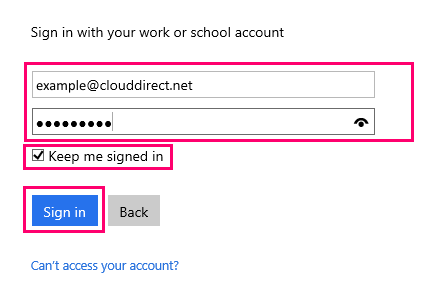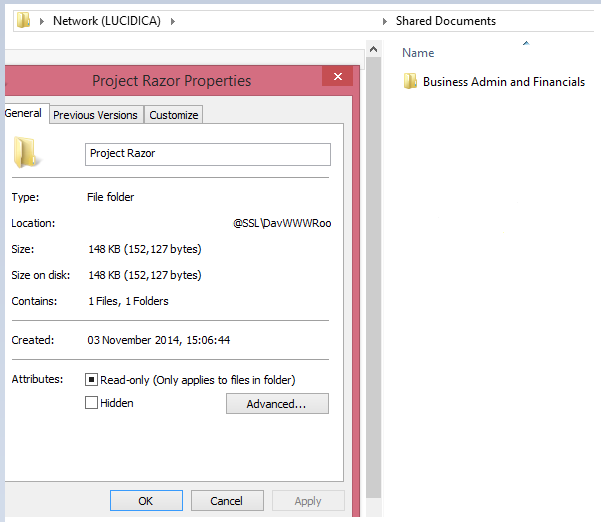One Drive for Business sync. The functionality sounded great. Allow me and my team to efficiently access and collaborate on local files synced from centrally located SharePoint libraries? Off-line edits and additions magically syncing and merging with my teammates changes once I establish an internet connection? SharePoint power and security plus DropBox like sync? Sign me up.
We have Sharepoint mapped as a network drive and now I am trying to create a batch file that will remap it if and when it disconnects. File to map Sharepoint as a. Map a Folder to a SharePoint Library 1. Next we will Map the SharePoint folders like a network drive. Open File Explorer by right clicking the Start button in the lower left corner and selecting File Explorer.
We can use this same feature to trick the PC into connecting to a Document Library in SharePoint online and mapping it to a drive letter on your PC. Step-by-Step Instructions 1. Launch Internet Explorer. This is a very important step, as this system won’t work in other browsers, not even the new Windows 10 browser, Edge. Assigning a SharePoint document library to a drive letter in File Explorer in Windows, will make it easier for users to access and work with shared documents on SharePoint. How to MAP a SharePoint Site as a Network Drive in File Explorer in Windows 10. Launch Internet Explorer.
When it works, it is fantastic. But, even if you adhere to all best practices, and give it the best possible chance to succeed, you will eventually run into sync issues. Which means stop syncing the library, delete cache, re-sync. And do it again when it next time it breaks.
To be fair, this is MUCH better than the old SharePoint sync mechanisms – SharePoint Workspace or Groove. And, I understand how difficult it is to reliably sync any data, much less documents that dozens of people may be collaborating on. I know Microsoft is working to improve it and they have shown they can make great progress when their energy is focused. Lets hope the complaints of thousands of people that just want it to “sync like Dropbox” are being heard by the people that can direct that focus.
Having said all of that, I will add that I love SharePoint and think it is underutilized by many Office 365 customers. We rely on it heavily at Clarus. We have excellent bandwidth at the office – it doesn’t make sense to sync copies of files to all of our desktops. But using a browser as the sole vehicle for accessing files doesn’t work for me. So, we map drives to libraries. This gives us the look and feel of regular local files and the ability to move files around that is not possible now via a web browser. We still have simultaneous, multi-user edit capabilities for supported file types, but no sync headaches.
It is possible to map a drive to SharePoint or OneDrive for Business and maintain the connection through reboots. With one caveat (of course there is) – you need to log in to SharePoint and browse to one of your mapped libraries when you reboot. And…you should do this with Internet Explorer (IE). The purpose of this is to keep the security token for SharePoint active.
**Technically we are “Adding a network location” but start the same way we would map a drive. This functionality relies on WebDAV and the Webclient service.
So, to do this, you need to know the path you will use for the mapped drive/network location.
Getting the path for a SharePont Library
Use IE to browse to the SharePoint library you want to map a drive to. The URL in your browser will not work for our mapped drive – we need to know the true path. To get this, click on the Library tab, then click the “Open in Explorer” button. Again use IE – Open in Explorer does not work in Chrome.
Windows Explorer should open and you should see the contents of your Library. That is the path we want. Copy that into the clipboard.
Getting the path for your personal One Drive for Business
***One Drive for Business is a little different. You Cannot “Open in Explorer”. But, unlike a regular SharePoint Library, you can make out the necessary path easily enough. For a One Drive for Business path, navigate to One Drive for Business and click Files. Copy everything prior to “/_layouts/” from the address bar.
Then, bring up the Map Network Drive dialog (right click This PC / My Computer and choose “Map Network Drive”). Do not use this first screen for mapping your library. This mechanism will not survive reboots without some serious gymnastics you do not want to deal with. Click the “Connect to a Web Site…” link (highlighted below).
The Add Network Location Wizard appears. Click Next.
How to patch codebreaker v10 elf. Select “Choose a custom network location” and click Next.
Paste your Library or One Drive for Business path that you copied earlier into the address field.

Give it a name, then Click Next, Next, Finish.
And there you go, a mapped SharePoint Library that will survive reboots.
Just remember to log into SharePoint using IE from time to time and the necessary security tokens will be present to maintain the connection.

If you browse to one of your mapped folders and you receive an error message, chances are you either do not have an internet connection, or the security token has expired due to an extended period of time without touching SharePoint (logging into SharePoint via IE and minimizing it counts as a touch). Simply log into SharePoint, browse to any library and “Open in Explorer”. All your mapped libraries will be accessible again. I have gone months without needing to do this.
This is ideal if you are desktop user with solid internet connectivity and bandwidth. Keep in mind, if opening a 10 MB file, it is going to open as fast as your down speeds will allow. With fast internet being ubiquitous and much cheaper these days, this is a viable option for many businesses and home office based users.
I see this happening over and over again. Companies purchase Office 365 subscription, create a single site in SharePoint with a single document library, migrate their whole file share into that single library, map it as a network drive and call the project complete. What usually follows is a dismal user experience from a performance standpoint and badmouthing of SharePoint and anyone who made a decision to migrate to Office 365. If this sounds familiar – keep reading.
I have written a post previously where I cautioned against using SharePoint as a file share. When you map a SharePoint document library, you essentially say:
Mapping Sharepoint Document Library As Network Drive In Linux
“We want to collaborate the same way we did for the last 20 years”
If this is your wish, so be it, but I would argue against using SharePoint for this purpose. Because you will fail miserably. That’s not what SharePoint was designed for. Below I would like to present few reasons why, in my opinion, you should not create any mapped drives with SharePoint.
Don’t have time to read the post? You can listen to the Podcast episode on the same topic below.
Reason 1: Technical limitations
Sooner or later you will encounter SharePoint technical limitations.
- 5,000 item limit. Read here to learn more
- URL length. If you have a very deep folder hierarchy, you will encounter it one day. Click here to learn more.
- Performance. As your library grows in size, you will see degraded performance
Reason 2: User Experience
The best practice in SharePoint is to create many sites and many libraries as you split content by function and security. Even on a single site, you might have one, two, four document libraries. How will you handle this with mappings? Are you really looking to create like twenty mappings? 🙄
Reason 3: Search
As I have written previously, SharePoint search is quite robust. The new, modern search is just awesome! Search in SharePoint goes against content within the document as well as metadata. When you search a mapped drive, you are using the regular Windows Explorer search. Should I even say more here…
Reason 4: Metadata
If you map a drive in SharePoint, you are missing big time on metadata. There is no metadata in Windows Explorer. You have to access your files via SharePoint to be able to tag, search and filter based on metadata.
Reason 5: Versioning
Versioning, in my opinion, is one of SharePoint strongest features. Ability to see and track changes, ability to access and restore previous versions brings collaboration to a whole new level. That is if you use SharePoint. If you map a drive in SharePoint – you won’t have access to these features in Windows Explorer.
Reason 6: Modern Document Library
Classical library experience that we had with all the old versions of SharePoint was pretty boring and did not allow for trivial commands like Copy and Move. Now that we have Modern Library experience in SharePoint Online, you can do the same things like you used to in Windows Explorer. You can copy and move files, for example, between folders, sites, and libraries right in the browser. So all the reasons that prompted you to work in Windows Explorer are no longer relevant.
Reason 7: Save As
One of the reasons for using mapped drives is the fact that it is easier to do Save As from MS Office documents to your C: Drive. With the recent update to MS Office, this limitation is no longer there, and you can easily save files from MS Office directly to SharePoint. Click here to learn more.
Mapping Sharepoint Document Library As Network Drive In Google
Reason 8:
How To Map Sharepoint Document Library As Network Drive
“Intelligence is the ability
to adapt to change”

— Professor Stephen Hawking (1942 – 2018)
Alternative to Mapping SharePoint Document Libraries

If none of the above reasons convinced you and you truly want to work with files like in 1995, may I suggest the Sync option? You can always sync your files to your desktop using the new OneDrive for Business sync client. While I am not a huge fan of sync, it does the job and makes the library or certain files and folders available on your desktop if need be.
Hope you found these reasons convincing enough to drop the old habit and move yourself to the 21st century. You don’t use telegrams anymore because we have email, so I suggest that you also work with documents using SharePoint browser experience instead of the outdated file share approach by mapping SharePoint document libraries.
Comments are closed.